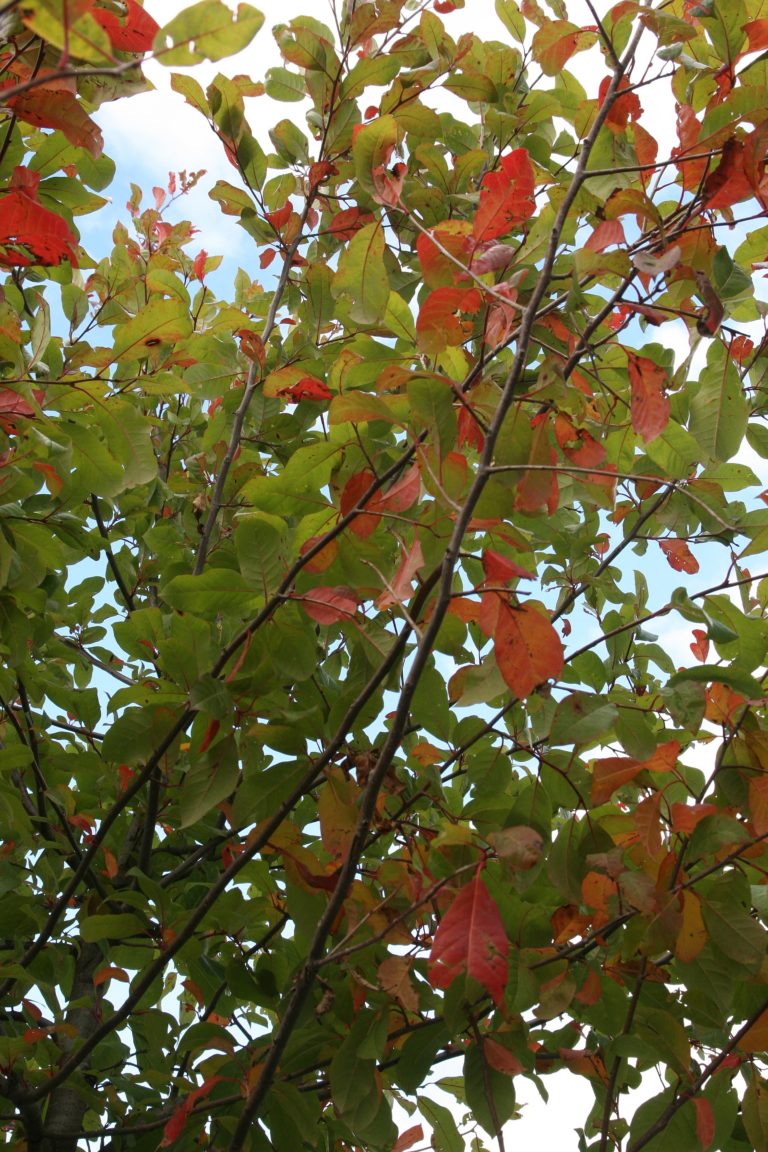This plant is not currently for sale. This is an archive page preserved for informational use.
Blackgum is a stately, medium-sized hardwood tree extremely desirable for its spectacular scarlet fall foliage and its wildlife appeal. It is adapted to a very wide range of habitats from standing water to dry slopes from east Texas to southern Maine. (In NC, it is reported in the mountains, the piedmont and the coastal plain.) Blackgum reaches up to 80 feet tall on moist sites, generally much shorter in the mountains. Its form is handsome, straight-trunked, with a wide, rounded crown, and it is an excellent choice for shade tree or street tree. Since it is tolerant of wet soils as well as dry soils, it is also a good choice for pond side. Its autumn colors — adjectives such as “fiery” and “brilliant” are not uncommon — occur fairly early in the fall season, calling birds to partake of the early-maturing seed crop. While the flowers are visually insignificant, they are an important nectar source for bees in late spring, and Blackgum honey is highly prized. The fruit are small and dark blue and are enjoyed by a whole host of East coast songbirds. The tree is dioecious, and female trees need a male tree in the vicinity for fruit set. According to Wikipedia, Blackgum is the longest living, non-clonal flowering plant in Eastern North America, capable of obtaining ages of over 650 years!

